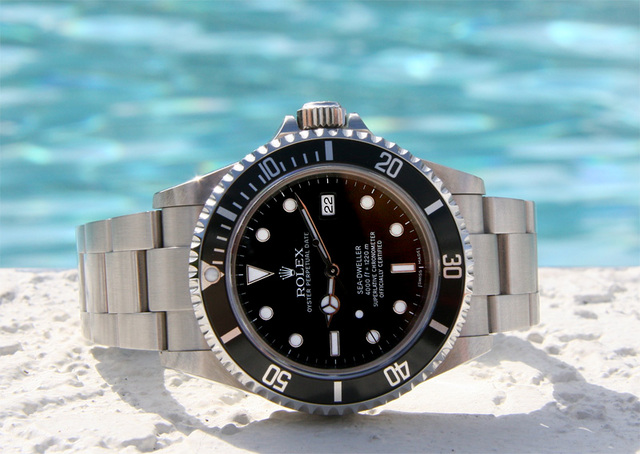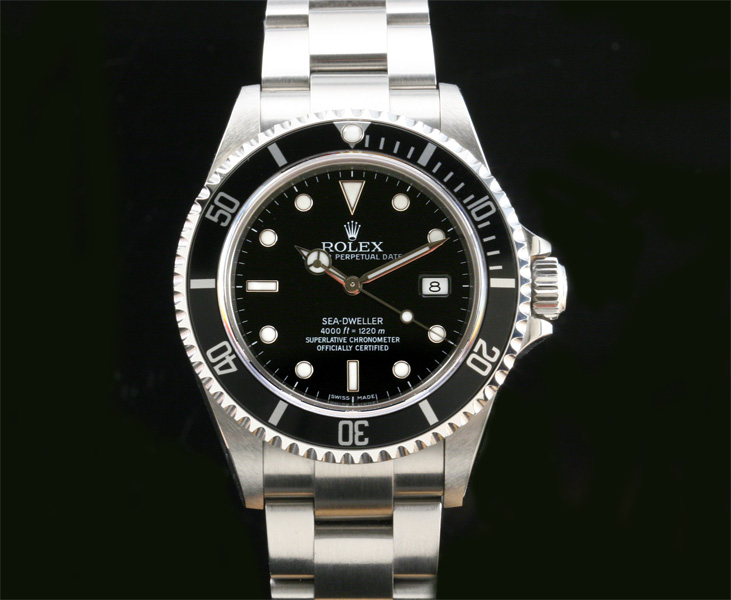
Rolex Sea-Dweller Review
By: John B. Holbrook, II
September 13th, 2004
To be honest, I never really thought I'd buy a Sea-Dweller. In fact, I never really even gave one serious consideration until about a week before I ordered mine. You see, I had a goal to collect a select few of Rolex's top sport watch models. At this point, I already had a 16613 Submariner, a classic "Pepsi" GMT Master II, and a white dial Explorer II. Each was ordered for their classic appeal, significance in Rolex history, and their cosmetic fit with my wardrobe. I had hoped that after the above three watches, my quest was complete.
Now, I had spent enough time around good friend and fellow watch collector John Rigano and his stainless 16610 to know I liked the look of the watch. But every time I got close to ordering a 16610 I always backed away. Sure the 16610 was a great watch, and I liked the look - but so does everyone else. The watch has become so common place. Still, I was *this close* to buying a used one, when on a lark I called up my dealer and asked if he had a Sea-Dweller in stock. As it turns out, he did. Then I thought about the prospect of owning one more seriously. One thing I had noticed is that even the most jaded, high-brow WIS has a high level of respect for the Sea-Dweller. I also rarely see anyone ever wearing a Sea-Dweller. When I considered all the factors together - the respect the watch has earned with both Rolex and non-Rolex watch collectors, the incredible technical specifications, the undeniable cosmetic appeal, and the uniqueness of the model among the general public, I decided to order it. I have not be disappointed in the least in my decision.
Cosmetically, the Sea-Dweller is a near twin to the 16610 Submariner. The differences stem from the Sea-Dweller being designed to be a true deep diving tool. The Sea-Dweller has a remarkable water resistance depth rating of 4000 ft. - that's 4 times the depth rating of the Submariner. To accomplish this feat, Rolex employs a thicker sapphire crystal than is used in their other sport watches. Because of the added crystal thickness, their standard magnification cyclops used over the date window is rendered useless. It is for this reason that the Sea-Dweller does not have a date magnifier, and many prefer the cleaner look this brings to the Sea-Dweller dial:
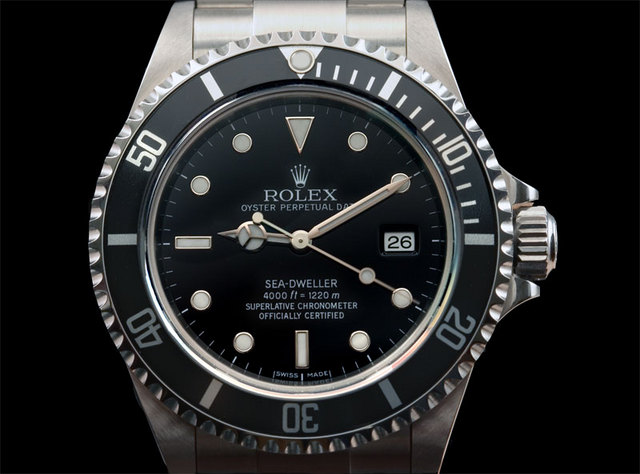
Because deep sea divers typically spend time in a decompression chamber, the Sea-Dweller employs an innovative solution to a unique problem discovered by COMEX divers back in the 1960's - helium pressure build up inside the watch case during decompression. Deep sea divers use a helium/oxygen mix in their air tanks while diving, and helium is also mixed into the air that divers breath during decompression (the amount of helium used in the mix is slowly reduced as their bodies are brought back to standard pressure levels while in a decompression chamber). Helium can permeate a watch crystal, and can build up pressure during decompression - early deep sea divers literally experience the crystal being blown right out of their watches as a result. Rolex solved this problem by integrating a helium escape valve into the Sea-Dweller case which will automatically release when pressure builds to a critical point. To accommodate the integrated valve, as well as the added reinforcement needed to enhance the Sea-Dweller depth rating, the case size of the Sea-Dweller is roughly 4mm thicker than that of the Submariner. The added thickness causes the Sea-Dweller to sit higher on the wrist than other Rolexes, and the watch feels noticeably heavier too. I like the distinctive look and feel this brings to the Sea-Dweller and find the watch very comfortable to wear with nearly any wardrobe selection.

Like the Submariner, the Sea-Dweller also employs a dive suit extension link inside the Oyster bracelet clap which allows the bracelet size to be quickly and easily expanded to fit over a dive suit. I will of course reiterate my pet peeve with the tin-like thin clasp and deployant used in the Oyster bracelet. Perhaps in my lifetime Rolex will use the flip lock clasp design used on the Daytona in the rest of the sport line.

The Sea-Dweller also shares the Rolex "Triplock" crown design feature. It's one of the keys to the amazing water resistance of the famous Rolex Oyster case. Not only is the screw down Triplock crown larger in size than the crown used on other non-dive watch Rolex watches, but it also employs special rubber gasket (visible in the picture below) which provides an added seal against water penetration inside the case.
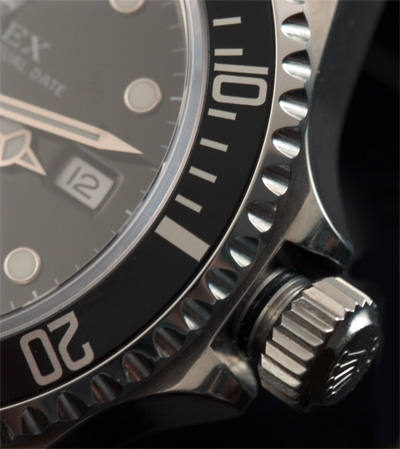
The Sea-Dweller is packaged a bit differently than the other sport models too. Included is a Rolex green leather wallet that holds a Buehlemann diving chart, additional dive suit links, and a marvelously handy link changing tool.


The Rolex Reference 2100 double ended tool (screw driver on one side, fine adjustment pin on the other) is such a nice device for Oyster bracelet adjustment that I'm surprised (to a degree knowing Rolex's idiosyncrasies) that it isn't included with all Rolex watches.
The 904L stainless steel Oyster bracelet is an object lesson in simplicity in design and functionality. The tapered links with their brushed finish give the Sea-Dweller a cosmetic appeal that is undeniable, yet also provide unprecedented durability. The Oyster on the Sea-Dweller was the first Rolex sport watch to receive the benefit of solid end links, which are not only more cosmetically pleasing, but also less noisy than the rattling hollow end links of the older style Oysters. Tough, comfortable, and easy on the eyes, the often copied Rolex Oyster bracelet has it's share of short comings, but there really is nothing quite like it.
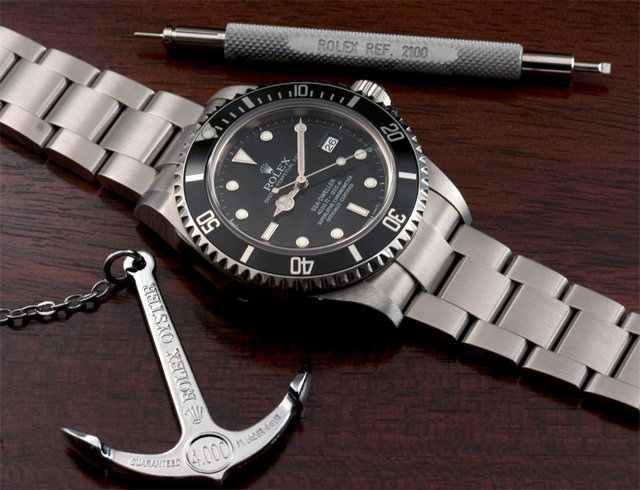
Inside the watch, Rolex has fitted the Sea-Dweller with the famous Rolex 3135 self-winding movement - the 31 jewel Rolex caliber (designed and manufactured entirely "in house" by Rolex) has been in service since 1989. The 3135 is a high-beat movement, and oscillates at 28,800 beats per hour (BPH). While I've written extensively on the 3135 in my other reviews, it is suffice to say that the in house designed and manufactured 3135 is legendary for its accuracy (COSC certified) and robustness. The 3135's performance specifications make it an ideal match for the extreme demands that many deep sea divers will place upon the Sea-Dweller.
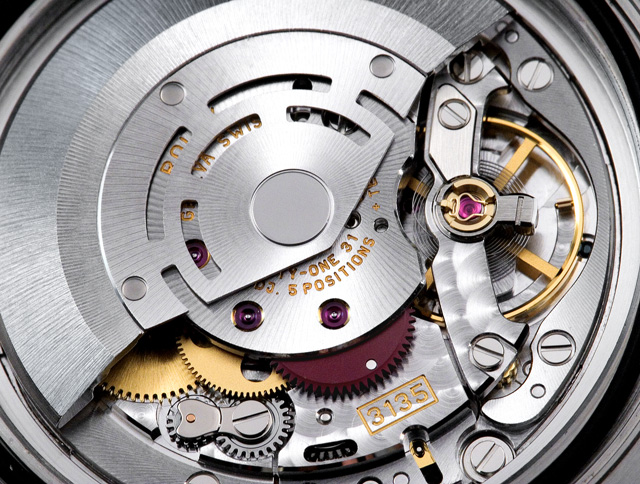
I can find little to fault in the Sea-Dweller, besides the above mention clasp short comings and the prohibitive $4400.00 retail price tag. Thanks to the legendary movement inside the Sea-Dweller, it's impressive capabilities, and clean look, it is considered by many to be the most desirable dive watch in the world. Despite the fact that I'm not a SCUBA diver (avid swimmer and occasionally snorkel) I'm very pleased this F series Sea-Dweller is part of my modest collection of automatic sport watches.
